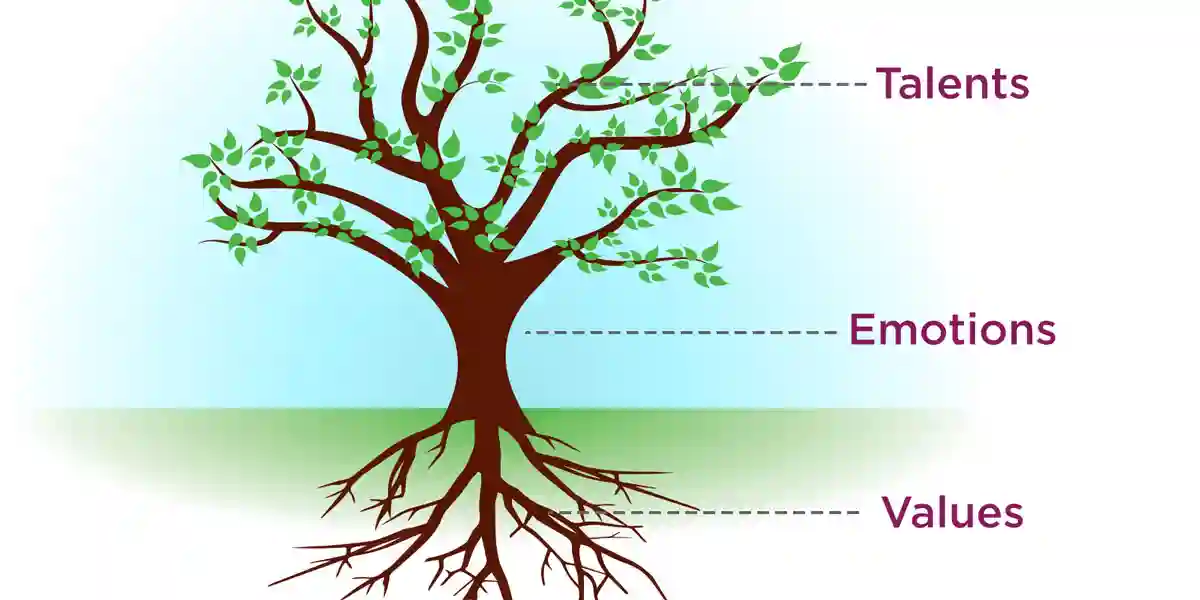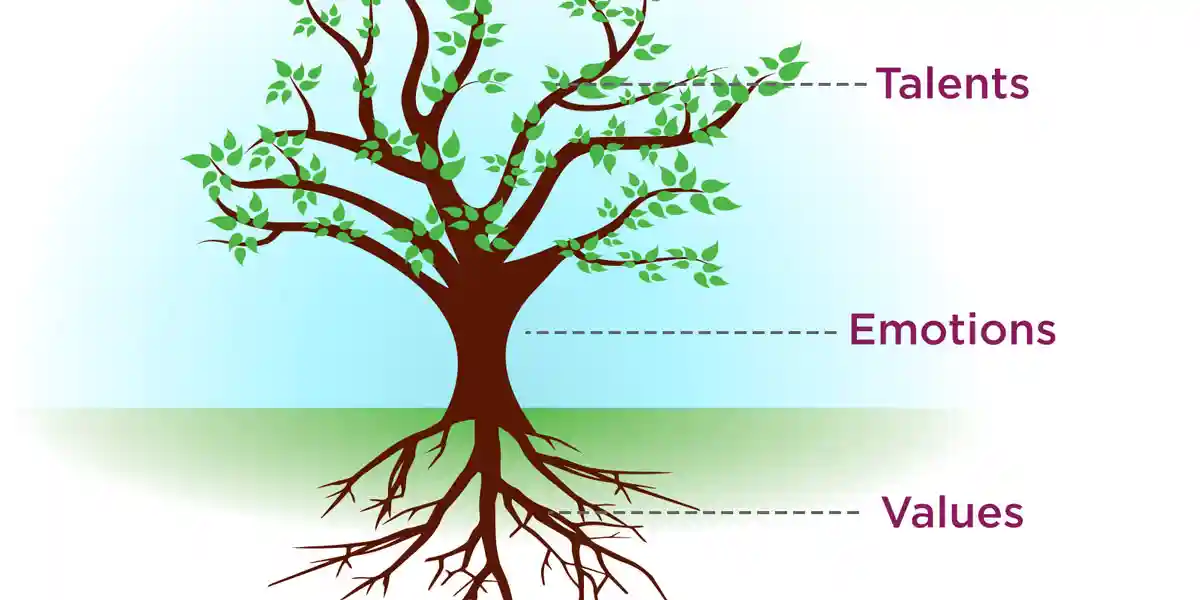Resilience is often thought of as a trait outside of our direct control: some of us are born with it, and others are not. Some think of resilience as a result of circumstance. We can be resilient up to a point, but after that, there is a limit to our ability to cope.
There are some factors impacting resilience that are hard-wired. For example, some people are just more likely to experience anxiety or other heightened emotions. However, there are aspects of resilience that are skill based. These aspects can be improved with introspection and practice.
The problem with most advice on improving resilience? It’s simply too common sense or one-size-fits-all. (Exercise more! Eat well! Get more sleep!)
A more nuanced approach to resilience is a personal one. By building self-awareness, we can take a closer look at what is draining our energy. We can also recognize what contributes to our engagement, purpose, and sense of well-being.
As it turns out, however, self-awareness is in short supply. Recent research indicates that only 10 to 15 percent of people actually have it. In DDI’s leadership course, Leading Self: Turn Awareness into Impact, we teach leaders three areas of focus for improving self-awareness. By focusing on these areas, leaders can improve their resilience and learn to thrive during challenging times.
1. Define your core values and ensure your actions are aligned with them
Growing resilience first requires understanding our core values and then living in a manner aligned with them. But how can we define our core values?
One way is to look at how we prioritize our time, resources, and energy. Someone who is willing to sacrifice personal time to attend graduate school in the evenings likely values a life of achievement and growth. Choosing to live in an inexpensive home in order to save for the future is a sign someone values a life of security.
Another way is to envision your ideal self. If you were living up to your greatest potential, what would your life be like? Do you think of status, wealth, or career achievement? Do you envision a life of creative expression? Do you imagine the personal legacy you’ll leave behind?
Once we know what our core values are, then we can strive to create a life for ourselves that’s supportive of our values. And why is this important? Doing this adds urgency, clarity, and meaning to our actions.
But what about actions that take us further away from living up to these values? These actions can be “deal breakers.”

Why values are critical to resilience
Why are our values so critical to resilience? They not only tell us what we enjoy and what energizes us—but they are also key to our identity. Behaviors aligned with our core values allow us to become the version of ourselves we think we can and should be.
During times of increased pressure, ambiguity, and change, it’s common to see a widening of the gap between what we do and what we value. Let’s consider two examples.
- Greg’s primary core value is ensuring work/life balance so he can spend time with family. However, he starts putting in longer hours after a corporate restructuring. He frequently misses family dinners and isn’t able to help his children with their homework.
- Carmen, who values community and teamwork, finds herself unfulfilled after her job is made remote. She craves interaction but feels exhausted after endless Zoom meetings. Her many daily virtual meetings don’t create the same sense of connection she was used to getting at the office. She misses those informal in-person interactions the most.
If our values serve as extensions or even completions of our identity, we can’t thrive as our authentic selves until we understand our core values and realign our behavior with them. This can lead to small but meaningful changes with an outsized impact.
What should Greg and Carmen do?
Greg may decide to forego an exciting but elective committee assignment. He knows this extra assignment will cause his work to further expand into evenings and weekends.
Carmen might allocate time each week for catch-up calls with members of her extended network she’s lost touch with since working remotely. These calls would reenergize her and make her feel connected. She wouldn't mind starting her day a little earlier to make time for this.
2. Manage emotions when tensions run high
Another aspect of self-awareness that promotes resilience is understanding our emotional triggers. Once we understand these triggers, then we can develop self-regulation techniques that reduce the risk of responding in a way we’ll later regret.
As stressors from our personal lives, work lives, and world events stack up, it’s hard to anticipate when others may be near a boiling point. We might not even know when we are nearing a boiling point ourselves!
The key to improving resilience is understanding what situations are most likely to cause you to have a strong emotional response. Once you know what these situations are and when they’re likely to happen, it’ll be easier to “turn down the heat.” You’ll know when you’re about to respond in a way that’s not aligned with your intentions.

Identifying triggers
So how do we identify our triggers? Think of the last few times you’ve responded in a highly emotional way. What themes or patterns emerge? Common examples of workplace triggers include disrespect, not feeling heard, others wasting your time, or workplace favoritism.
Another way to identify your triggers is to consider the inverse of your core values. For example, if you value inclusion, being talked over or ignored in a meeting (or seeing that happen to someone else) can be incredibly triggering.
Knowing your triggers is half the battle. To build resilience, we must also be aware of our typical ineffective responses. These include responses like venting to others in an unproductive way or jumping to overgeneralized conclusions (e.g., everyone in this company is out for themselves; no one ever listens to my ideas).
We can replace these ineffective responses with better ones. For example, if your common reaction when triggered is to respond passive-aggressively, a good alternative is to wait it out. After your strong emotions have passed, get your thoughts together, and then offer constructive, balanced feedback.
If you tend to respond by gossiping to the coworker who you know will just add fuel to the fire, consider reaching out to a more neutral third party. Find someone who will hear you out and provide advice on how you can handle the situation.
3. Leverage your most energizing talents
In turbulent times, we crave a feeling of being in control. Doing things within our comfort zone provides a sense of mastery and self-esteem. But perhaps most importantly, it gives us a sense of normalcy.
Many people aren’t aware of their top talents. (Remember how so few of us are actually self-aware?) But there are several ways to gain insight into your leadership talents:
- Reflect on your career. Consider the times when you most consistently felt satisfied and accomplished. What skills were you demonstrating?
- Ask for feedback from others who know you well. What do they see as your greatest talents?
- Participate in a 360 or other assessment to get insights into your best skills. Do you have any talents that you didn’t know about?
- Monitor your energy levels throughout the workday. Make note of the kinds of tasks that make you feel motivated and enthusiastic. Also take note of those that make you feel drained and disengaged.
The more you use your leadership talents, the greater sense of control you can create. This may require you seeking assignments that both use your talents and include the behaviors that energize you.
And this may feel counterintuitive, because a common resilience strategy is to say “no” more often. But the key is to say “no” to the right things. Doing this will help to not deprive yourself of the chance to use your talents to their greatest potential.
Resilience is about knowing how to recharge
Resilience may not be the top competency we think of when we imagine what a great leader looks like. However, by growing your own resilience, you create more space to lead others through turbulent times.
After all, recent data from DDI’s Global Leadership Forecast says that only 18% of leaders feel confident helping team members avoid burnout. And what’s one big way leaders can help their teams with burnout? Leaders can show up every day as energized and engaged as they can for their teams. This is a key part of being a resilient leader—and a resilient person.
Finally, remember, resilience is not about how long you can drive on an empty tank of gas. Instead, resilience is about the ways you can recharge and refuel along the way.
Give leaders the essential skills they need to lead with resilience and best support their teams during uncertain times. Learn about DDI’s Personal Resilience Learning Journey.
Mark Smedley is a Client Relationship Manager for DDI. He works with healthcare organizations to design and implement their leadership strategies.
Topics covered in this blog

